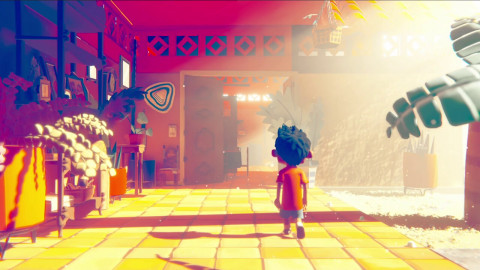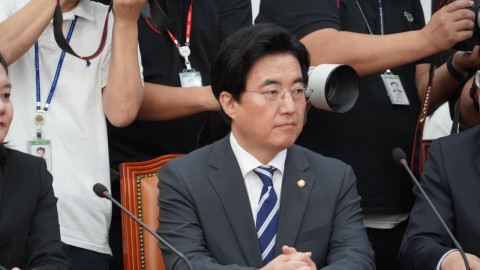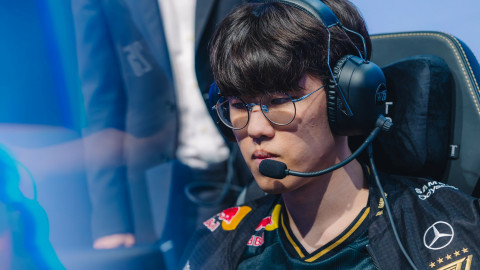
When it comes to the kind of languages that games are built-in, it's usually French, German, or Japanese. But did you know that there are currently emerging markets in the gaming industry?
Today, we will discuss these emerging markets with Ofer Tirosh, the CEO and founder of Tomedes, a translation agency that has provided multilingual solutions across 120 languages to indie gaming developers and Fortune 500 gaming companies worldwide. As someone who has been part of the industry for fifteen years, he has managed several gaming projects that would resonate and connect to our target market demographic.
To learn more about this, then keep on ready!
International Gaming Market Growth and Trends for 2022
Let's discuss the international gaming industry's current state to get started. The gaming market has an estimated compound annual growth rate of 9.64% from 2022 to 2027. It has a market value of 173.70 billion USD and an expected value of 314.40 billion USD by 2027.
Currently, the global Esport market is valued at around 1.08 billion USD despite the slight dip due to the pandemic. It's estimated that two years from now, it will grow to become 1.62 billion USD.
It's all due to the rising number of console sales, and more people are engaging in esports. It's expected that the esports community will gain 580 million viewers by 2024. Esports have become increasingly popular, opening new niches like competitive gaming on consoles and mobile games, making it more accessible. Also, esports has recently begun to accept augmented reality games, which will soon become a part of a gamer's daily life.
Many developers have sought to localize games, and this trend seems to increase each year. It makes sense as there are only about 1.35 billion English speakers. The rest of the world isn’t English proficient, which is why the demand for localization has increased.
Why is Game Localization Important?
Since we've discussed that game localization projects have increased over the years, let's answer why it's important. In our interview with Tirosh, we asked him how crucial game localization is for the success of a game's launching in a foreign market.
"I think it would be difficult for any game to launch in a foreign market without considering the cultural and linguistic barriers of its target locale," Tiroshed explained. "Our role in localizing games is to ensure that gamers can understand and connect with gaming content, enhancing their overall experience."
According to Tirosh, the history of video game localization is as old as Pac-Man itself. Originally, the Japanese name was Puck-Man, which was changed to its current name when it was marketed in North America due to fear of the arcade game ending up vandalized because of how close it sounded to an obscene word.
They also renamed from Reddie, Pinky, Bluey, and Slowly into Blinky, Pinky, Inky, and Clyde respectively. The decision to change the names based on the cultural context of their target audience and not rely on the precise translation made this game successful in North America. Tirosh said that if done correctly, the game can make a lasting impression on gamers and help the developer's brand.
Should You Expand Your Games to Other Foreign Markets?
During our interview with Tirosh, we asked if game developers should explore new markets. He said that the current climate of the gaming industry is ripe for it. Now more than ever, game developers should start evaluating potential markets where they can be ahead of their competitors.
"Currently, around 40% of the top gaming markets are Asian countries. Experts say that the Middle East and Africa are the fastest-growing gaming markets. Most often, the localization of gaming content in these markets isn't as abundant compared to others," Tirosh said.
It is why you must seek out a translation agency that specializes in the market you're entering, as the outcome could affect how you move forward in expanding your games to foreign markets. There are several considerations in localizing a game, including the target languages, language intonation, and the swearing you'll include.
We listed below the following markets that you should start thinking of looking into if you're planning to expand into new markets:
India
As the second-largest population in the world, it's no wonder they are also considered the top gaming market. According to Business Standard, its gaming market value will be around 1.8 billion USD in 2021. It saw a compound annual growth rate of 38% from 2017 to 2020.
India has around 270 mother tongues, 121 languages, and 22 official languages. If you're planning to enter the market, working with a translation agency can make it easier for you to have your game accessible in various languages under one team instead of having freelance translators.
Turkey
Compared to other Arabic-speaking countries, Tirosh said that video game localization is easier for a UX/UI design expert because instead of the text being written right to the left, it's left to right. Currently, Turkey's gaming market is worth 1.2 billion USD. Because of this, it's a promising market for any game developer to enter.
Philippines
According to Statista, mobile games in the Philippines are on the rise. By 2025, it's forecasted to generate a revenue of 1.52 billion USD. The global market revenue of the Asia-Pacific region, about 47% of it, comes from the Philippines.
When considering video game localization for this particular market, the Philippines has 180 languages and three official languages: Mother Tongue (Regional Language), Filipino, and English. Because it's a country with many languages, the vast majority of the population often mixes them. Taglish is the most common code-switching of two languages that has its own grammatical rules, wherein the English word is conjugated through Tagalog affixes.
Brazil
In 2021, Brazil generated a revenue of 2.3 billion USD in its gaming industry. If you think you can use the European Portuguese language in your localization, Tirosh explained that it would be a bad idea because Brazilian and European Portuguese languages are very different.
Some are differently spelled, some aren't the exact words, or they have different meanings. Because of this, it's wise to look for a translation agency with native Brazilian Portuguese translators who can effectively translate and convey the game's message.
Poland
The Polish gaming market's growth is said to be 9.20% from 2022 to 2026 or around 982.50 by 2026. If you're planning to implement video game localization in Polish, you should be prepared for that because it's considered one of the most difficult languages. So you must look for language experts who have a linguistic mastery of the Polish language and the cultural preference of your target locale.
Indonesia
Indonesia's video game market was projected to research 2,054 million USD in 2022. It was forecasted that it will have an annual growth rate of 6.85% from 2022 to 2026 and will be worth 2,677 million USD in 2026. Out of all the ASEAN countries, Indonesia has the highest Esport tournament.
If you're planning to ever launch an Esport even in Southeast Asia, Indonesia is the best place where you can expand.
Middle East
It's forecasted that the Middle East Gaming Market will experience a growth of 13.88% from 2022 to 2027. According to Tirosh, 22 countries use Arabic as their official language for business transactions. Depending on the country, there will be a version of the Arabic language that only locals will understand.
If you're planning to hire a translation agency, be sure they use Modern Standard Arabic, which is understood by most countries. One key takeaway is that Middle East countries have cultural restrictions that you should respect and comply with to avoid legal issues in the long run.
Conclusion
Despite economic instability brought by the pandemic, the global gaming industry’s resilience shows that game development has great potential. Hopefully, the insights of an expert in localizing games are helpful as you begin planning your strategy in entering one of the mentioned markets.
-
 Guest Reporter
Guest Reporter
Sort by:
Comments :0





